Retro Replay Review
Gameplay
Boku wa Kōkū Kanseikan puts you in the nerve center of four major Japanese airports—Nagoya, New Chitose, Kansai, and Tokyo International—tasking you with the seamless coordination of every arriving and departing flight. The interface revolves around a clear, menu-driven system: select an aircraft icon on the airport map and choose whether to land, take off, taxi to the hangar, or move to the runway. Beyond these core commands, you’ll also dispatch plow vehicles to clear snow, schedule maintenance crews for routine checks, and even deploy emergency teams in case of unexpected malfunctions.
The depth comes from balancing simultaneous tasks under a ticking clock. Flights arrive and depart on strict timetables, and any delay can ripple through your schedule—boarding gates may get backed up, runways become congested, and maintenance windows shrink. Early levels introduce only a handful of flights, allowing you to focus on mastering basic commands. As you advance, traffic density skyrockets and weather conditions such as sudden snowstorms at New Chitose or typhoon-level winds at Kansai add strategic layers to your workload.
What sets this simulation apart is its emphasis on realism rather than flashy action. You’re not piloting a plane—you’re orchestrating an entire network. The challenge lies in juggling simultaneous priorities: guiding an incoming jumbo jet off a slippery runway while sending a commuter turboprop around for refueling. Successfully clearing delays and keeping everything on schedule offers a genuine sense of accomplishment, even if the learning curve can feel steep at first.
Graphics
Visually, Boku wa Kōkū Kanseikan adopts a clean, functional aesthetic that prioritizes clarity over visual spectacle. The top‐down airport maps are crisply rendered, with runways, taxiways, and terminals delineated in distinct colors. Aircraft appear as simple yet recognizable icons, each styled after real-world models, making it easy to distinguish between narrow‐body jets, wide‐bodies, and regional turboprops at a glance.
While the game doesn’t feature highly detailed 3D models or dynamic camera angles, it compensates with smooth animations and intuitive UI feedback. Taxiing planes glide along designated paths, plows slowly carve through snowy runways, and maintenance crews move out promptly when dispatched. Status windows pop up with clear color-coded alerts—yellow for warnings, red for immediate emergencies—ensuring you can respond quickly under pressure.
One subtle highlight is the day‐night cycle and weather overlays. As you progress through a shift, runway lights flicker on after dusk, and storm clouds obscure portions of the radar, forcing you to rely on instrument readings rather than visual cues. These touches are modest but effective, injecting variety into the otherwise interface‐driven experience and reminding you that real-world conditions are rarely perfect.
Story
True to its simulation roots, Boku wa Kōkū Kanseikan doesn’t boast a traditional narrative with characters or plot twists. Instead, the “story” unfolds through each scenario’s operational drama. You’ll witness the ebb and flow of passenger travel seasons, handle surprise VIP flights, and tackle simulated emergencies like de‐icing malfunctions or runway incursions. Every new assignment feels like a fresh chapter in the life of an air traffic center.
Each airport stage carries its own local flavor. Tokyo International’s crowded airspace demands split‐second decisions amid a relentless takeover and landing queue, whereas New Chitose challenges you with heavy snow and freezing temperatures that slow every clearance. Kansai International’s offshore location introduces sea fog and tidal concerns, while Nagoya’s mix of cargo and passenger services creates a different logistical puzzle. This regional variety provides a narrative backbone, letting you feel the unique personality of each Japanese hub.
Though there are no voiced cutscenes or in‐game cutaway interviews, the text briefings before each session set the scene effectively. You’re given background on seasonal traffic patterns, VIP delegations that require special handling, or impending storms that could disrupt schedules. These short mission intros form the closest thing to storytelling here, grounding your tasks in a believable aviation world.
Overall Experience
Boku wa Kōkū Kanseikan offers a highly focused simulation experience that will resonate most with players who appreciate strategic planning and real‐time problem solving. The lack of flashy visuals or cinematic flair might put off casual gamers seeking instant gratification, but for those intrigued by the inner workings of airport logistics, this title delivers hours of engrossing challenge.
The game’s replayability is strong thanks to varied traffic scenarios, shifting weather patterns, and escalating difficulty. Even after mastering the four main airports, you can revisit earlier stages with higher traffic quotas or stricter time constraints to test your efficiency. Leaderboards or personal best score tracking further incentivize you to shave seconds off your clearances and eliminate every possible delay.
In summary, if you’ve ever watched aircraft docking from an airport terrace and wondered what it’s like to pull the strings behind the scenes, Boku wa Kōkū Kanseikan offers a rare window into air traffic control. Its intuitive menus, realistic scheduling pressures, and regional flair make it an engaging choice for simulation fans and aviation enthusiasts alike. Just be prepared to trade adrenaline‐fueled dogfights for the deliberate, satisfying pace of logistical mastery.
 Retro Replay Retro Replay gaming reviews, news, emulation, geek stuff and more!
Retro Replay Retro Replay gaming reviews, news, emulation, geek stuff and more!
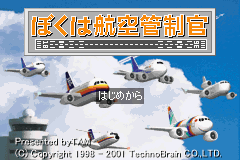
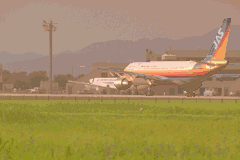
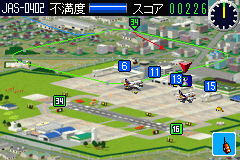
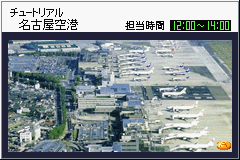
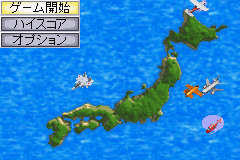



Reviews
There are no reviews yet.